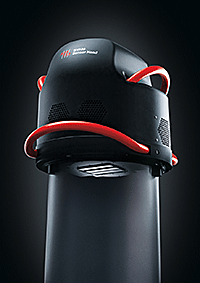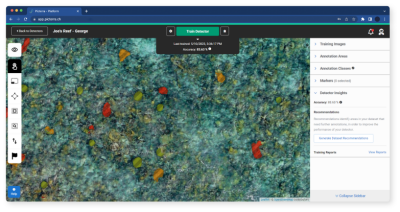.gif)
North West Geosystems to expand in traditional remote sensing markets – agriculture, forestry and environmental monitoring
Canada’s leading airborne lidar firm, North West Geomatics Ltd., is the first aerial mapping firm to purchase Leica Geosystems’ new airborne digital sensor.
Switzerland-based Leica, the world‘s leading manufacturer of 3D laser scanning solutions including digital airborne and LiDAR sensors for the geospatial marketplace, said the deal includes upgrading six of North West’s existing Leica ADS80 cameras to the new ADS100 model, which rolled out to the market last week. Leica is part of Sweden’s Hexagon Group and maintains U.S. headquarters in Norcross, Ga.
“The Leica ADS100 is already creating excitement in the industry due to the high productivity it brings to data acquisition and product generation,” said Leica’s Jean Gardiner. “In a highly competitive market place, the new Leica ADS100 will deliver many opportunities for aerial mapping companies to differentiate themselves.”
Calgary, Alberta-based North West uses digital imaging cameras and airborne laser systems from the Leica ADS and ALS series of aerial sensors to provide lidar, aerial photography and digital remote sensing services using its six high performance aircraft, including four Cessna 441 Conquests.
The company said it will perform a series of flight tests on an ADS100 beta unit to help improve the jointly developed Leica XPro workflow point cloud software to automate and streamline processing of large data sets collected by the Leica ADS digital pushbroom cameras.
In 2006, North West became a complete digital acquisition and processing shop using Leica ADS digital sensors. The company is also the owner of Canada’s largest private ortho imagery database through its Valtus Imagery Services division, which serves up to 200,000 images per day.
“We committed early to testing and buying the new Leica ADS100 camera technology because the enhanced spatial resolution and radiometric sensitivity of this sensor will enable us to deliver superior image products to our customers,” said John Welter, North West vice president. “With the rich spectral content of the Leica ADS100 imagery, we expect to broaden our activity in traditional remote sensing markets such as agriculture, forestry and environmental monitoring.”
The ADS100 uses the world’s first large format CCD line with TDI (Time Delay and Integration) to increase light sensitivity despite a smaller pixel size. By doubling the cycle rate, high resolution images can now be acquired at much higher ground speeds.
The ADS100 offers nearly double the swath width and productivity than its predecessors with 20,000 pixels native resolution across all bands. Featuring a revolutionary beamsplitter design and focal plate layout, there is four-band (Red, Green, Blue, Near-Infrared) detection in the forward, nadir and backward directions, ensuring three-angle stereo collection in full color. To provide the best stabilization performance, the new Leica PAV100 gyro-stabilized mount is equipped with adaptive control technology.
Along with the ADS100, Leica has introduced its new Common Platform Concept, which will reduce the cost of acquiring future systems since cameras and peripherals will be easily swapped between aircraft, and personnel will only need training once to learn the hardware and software.
The PAV100 camera mount, control unit, pilot display and all mission planning/image processing software delivered with the ADS100 are compatible with the ADS80 and RCD30 Oblique systems as well as other sensors in the future, Leica said.
“The current Leica ADS80 has been proven to be one of the most reliable airborne sensors on the market. It’s combination of superior hardware design and dedicated workflow have led to record sales in 2012,” said Leica Vice President Ruedi Wagner. “With the Leica ADS100 we are now nearly doubling productivity while maintaining reliability and highly automated workflows, that are so well accepted in the market. The best of all, we can now offer our cost-effective upgrade path to both existing ADS and RCD30 standalone customers. In today’s highly competitive environment, why would anyone not take advantage of this perfect opportunity to operate the world’s most productive airborne digital sensor?”
Along with the well-known Leica RC30, the company’s airborne sensor portfolio includes the Leica RCD30 series of medium format digital frame cameras, the Leica ADS pushbroom sensors, the Leica ALS LiDAR series, and the Leica IPAS GNSS/IMU solutions. The combined airborne sensor portfolio includes the widest range of medium and large format imaging as well as lidar technologies, offering a choice of sensor for every application. A full suite of software from flight planning to post-processing provides end-to-end workflow for high accuracy orthophoto generation, feature extraction and map production.






